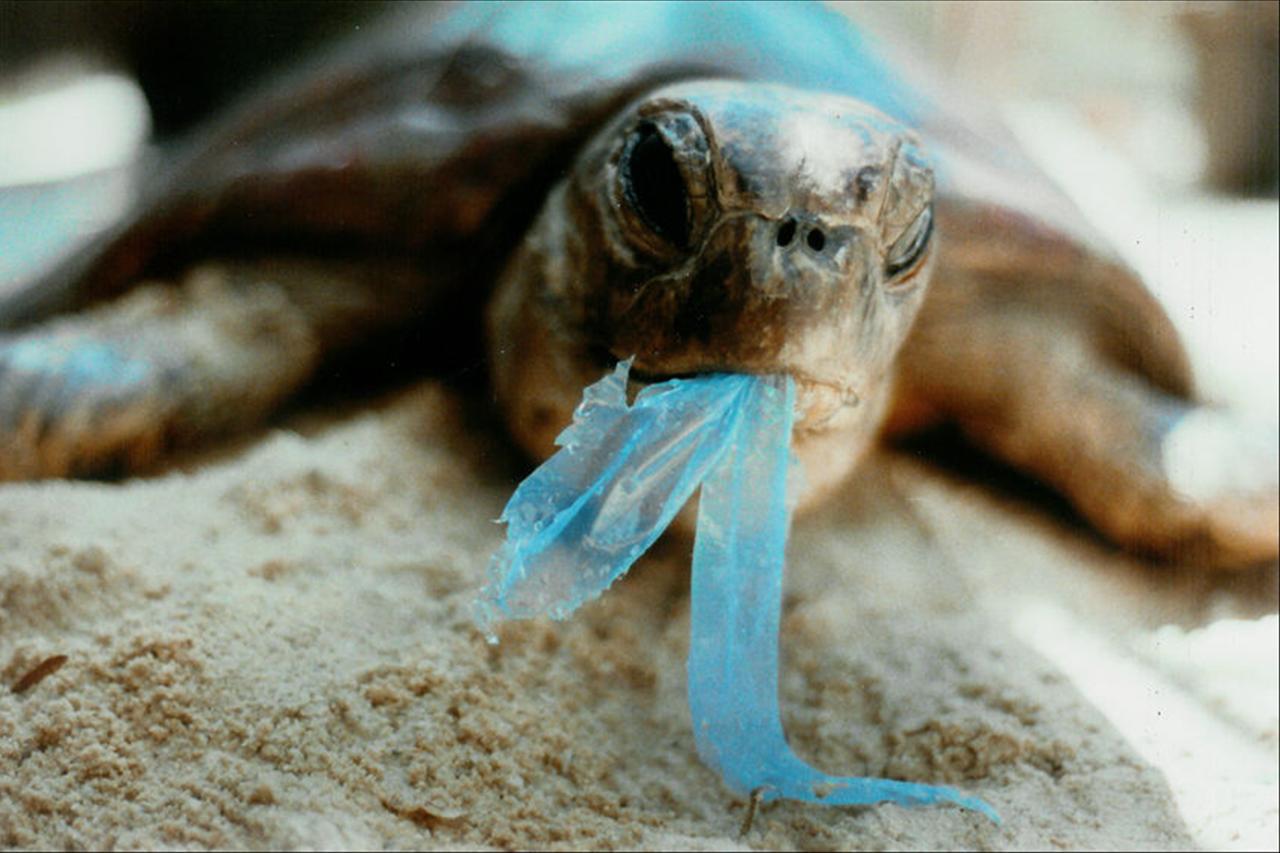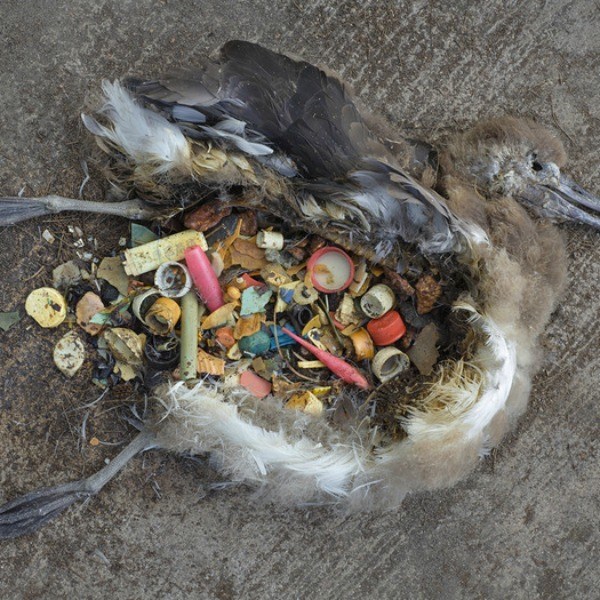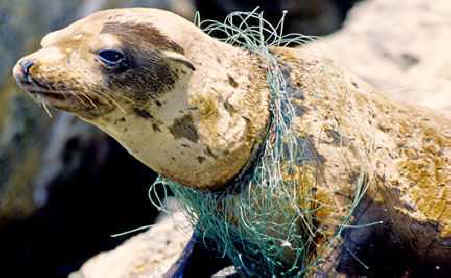Microplastics
Microplastics and how they form
Microplastics are small plastic fragments, beads, or fibers that are less than five millimeters in at least one dimension. Many materials in the environment are slowly decomposed by a variety of bacteria and other organisms. However, most plastics do not breakdown in this way. Plastics break down by either physical or chemical processes or by ultraviolet light. These processes break large macroplastics (>5mm) down to smaller and smaller pieces to form microplastics, that eventually undergo mineralization to CO2 (Bohdan, 2022). In addition, humans have engineered microplastics in the form of microbeads for use in personal care products (banned now in the U.S. and UK), as microfibers from synthetic textiles, and for use in nanotechnologies (some are 5 million times smaller than the largest microplastic).
How plastics get into lakes, rivers, and oceans
Pollution by plastics has been observed in lakes and rivers (Carbery et al., 2018), oceans, beaches (Imhof et al., 2018) and even in sea-ice in the Arctic and Antarctic (Waller et al., 2017). Plastics serve numerous indispensable purposes such as for lightweight, inexpensive, durable packaging, but these properties and their prevalent usage also make it easy for plastics to enter the environment. Production of plastics has increased markedly over the past 60 years (Thompson et al., 2009), thereby increasing plastic waste. In 2015, global plastic production reached 380 Megatons (Chamas et al., 2020).
Plastics end up in water bodies mainly due to improper disposal and littering by humans. It is estimated that 10 million tons of plastics are leaking into the marine environment every year (Boucher and Friot, 2017). Yet, there is another sneakier way that plastics enter the environment. This way is through our sewers to wastewater treatment plants and proper disposal of waste in landfills. Some examples are broken macroplastics in the trash or small fibers from our synthetic clothing end up in wastewater or lint from the dryer in the landfill. Many of these plastic fragments and fibers are too small to be caught by filtration systems in wastewater treatment plants. They are now being found in many different aquatic environments (Mason et al. 2016). This can be caused by improper lining of landfills.
How plastics affect the aquatic ecosystem



Some of the most obvious impact of plastics on animals occur when animals become tangled up in plastic netting or rings and suffer physical impairments that may lead to death. Animals can also mistake plastics for food. For example, thin film plastics and plastic bags look a lot like jellyfish or free-floating kelp. Small microplastics can look like plankton, on which many fish and smaller aquatic life feed. Plastics are hard for digestive systems to pass and usually end up sitting in the gut, giving the animal a false sense of fullness and can lead to starvation and death. In addition, small bits of plastic can have sharp edges that cause significant internal damage.
All levels of the marine food web can be affected, including bacteria, algae, crustaceans, and bivalves (Goncalves et al., 2021). Certain types of nanoplastics can inhibit the ability of bacteria to form biofilms and their overall growth rate (Okshevsky et al., 2020). Algae are very important for producing oxygen and other nutrients at the base of many food webs (Mao et al., 2020), and any disruption to their normal growth and behavior can be detrimental to a variety of species. Exposure to nanoplastics for as little as 96 hours has been shown to have significant impacts on growth rates of some species of microalgae (Venancio et al., 2019). In crustaceans, accumulation of nanoplastics in the gut (Bergami et al., 2017), lower swimming speed (Gambardella et al., 2017), and interruption in embryo development were observed as a consequence of nanoplastic exposure.
In addition, the micro plastics could harbor persistent organic pollutants (POPs) that are resistant to environmental degradation. Microplastics accumulate POPs on their surfaces that can negatively affect development, nervous, and reproductive systems. They can bioaccumulate in animals and other aquatic organisms and may move up the food chain (Roland, 2000; Rochman et al,. 2015). Toxic heavy metals such as lead, arsenic, and copper are commonly found on the surface of microplastics (Vo and Pham, 2021). Other foreign substances on or in the plastics can weaken immune systems and cause animals to be more susceptible to disease (Rochman et al., 2013).
Microplastics in humans
There is emerging concern over the ubiquitous nature of microplastics in our world and in our bodies. Microplastics have been found in seafood (Li et al., 2015) and in processed food including sugar (Liebezeit and Liebezeit, 2013), beer (Liebezeit and Liebezeit, 2014), salt (Yang et al., 2015), bottled water, milk, honey, and plastic teabags (Hernandez et al., 2019). Perhaps directly as a result of these findings, there is also a growing list of tissues and human fluids that microplastics have been found in. Blood, placenta, breastmilk (Ragusa et al., 2022), lungs (Amato-Lourenço et al., 2021), and stool (Schwabl et al., 2019). Virtually all body sites are represented. It has been suggested that exposure to these particles is “inevitable” (Ragusa et al., 2022).
Regarding the potential human health risks to microplastic ingestion, there are still many questions to answer. What are the overall exposure concentrations from dietary and airborne sources? Are microplastics able to accumulate in the body? What is the toxicological response to bio persistent microplastics? There are potential limitations with current analytical techniques are truly quantifying the concentrations in humans. A better understanding of exposure levels will give a better idea of the toxicological effects and possible health effects. (Wright and Kelly, 2017)
The type of plastic in question as well as potential additive chemicals affect their toxicity. Polyvinyl chloride has been identified as the most carcinogenic substance in plastics (Patil et al., 2022) and is one of the most highly produced plastics in the world. Bisphenol A and phthalates, among others have been associated with harmful effects on fertility and the endocrine system (Xing et al., 2022), and induced asthma in children (Lumio et al., 2021), respectively. These two additives have largely been phased out of baby products because of these health effects, but there are thousands of other additives in plastics that are largely unstudied.
Solutions
The world has started to take notice of this vast problem. A number of countries (for example, the Sri Lankan government) have banned single-use plastic items and are working to improve waste management. Countries such as the U.S and the United Kingdom (UK) have banned production and sale of products with plastic microbeads. Also, many non-government organizations such as the Ocean Conservancy, the 5 Gyres Institute, and the Alliance for the Great Lakes, to name a few, are working on research, education, and regulations to prevent plastic pollution and help to clean up the oceans, lakes, and other water bodies.